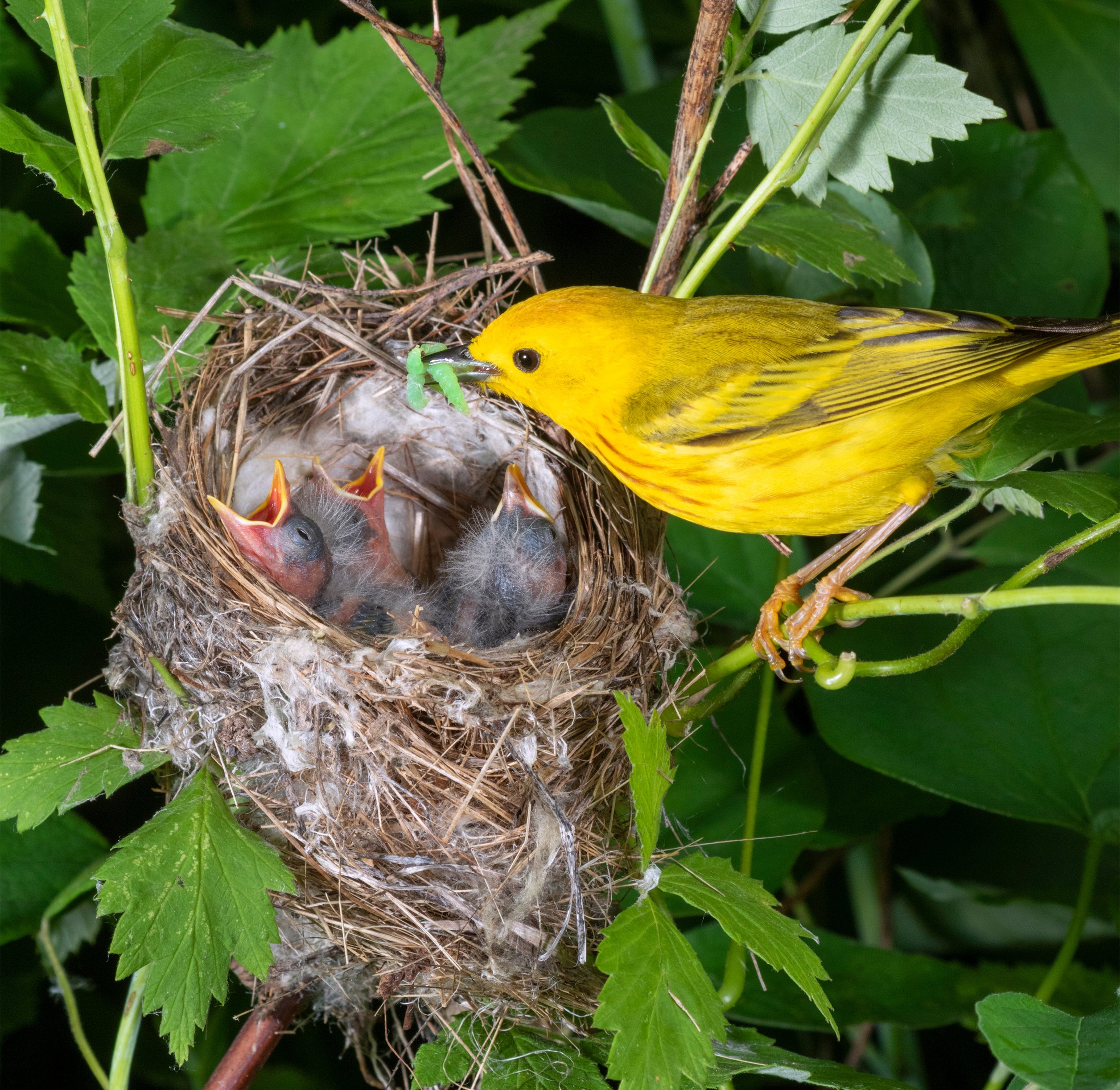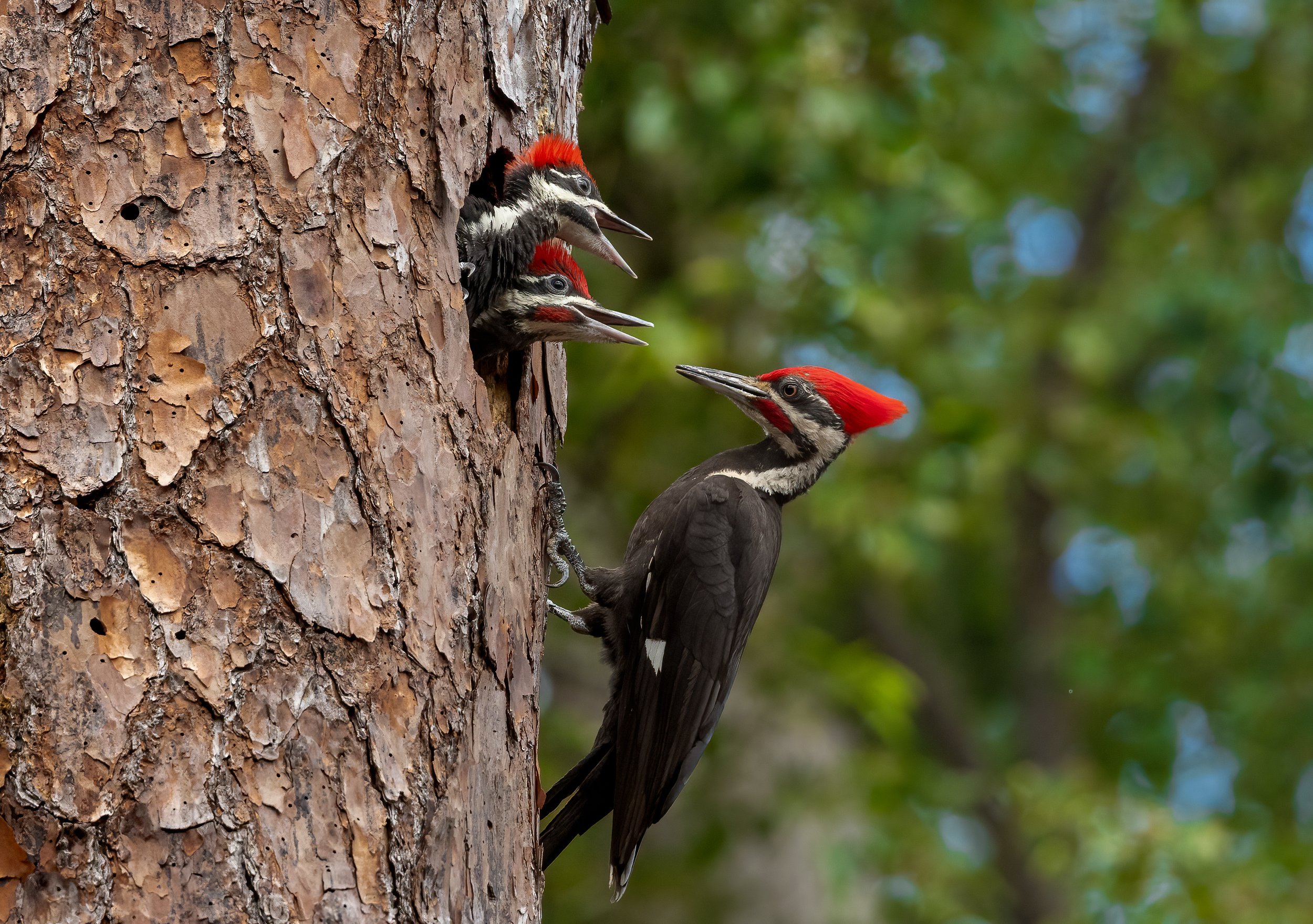What Are Nest Searches? And Why You Might Need One.
In Canada, migratory birds are primarily protected by the federal Migratory Bird Convention Act (MBCA; 1994) and the Migratory Birds Regulations (MBR; 2022). Under the MBCA and MBR migratory birds are protected from:
the dumping of harmful substances in waters or area frequented by migratory birds,
the capture , kill, take, injure or harassment of migratory birds without a permit,
the destruction or harm of migratory bird nests when they contain a live bird or viable egg; and
the destruction or harm of the nests of 18 migratory bird species who re-use their nests (year-round protection, unless determined to be abandoned *)
Under Schedule 1 of the MBR several species that nest in Ontario have been afforded year-round nest protection. These include:
Great Egret,
Great Blue Heron,
Green Heron,
Black-crowned Night Heron; and
Pileated Woodpecker
There are limited circumstances that may allow for the destruction or relocation of migratory bird nests with the proper permits.
Additional protections for wild birds are provided by the federal Species at Risk Act (2002), provincial Endangered Species Act (2007), and Ontario’s Fish and Wildlife Conservation Act (1997). These protections and regulations are an important part of the federal and provincial government’s effort to conserve avian species, and prevent and reverse Canada’s biodiversity loss. Many of Canada’s birds are in decline with grassland birds and aerial insectivores declining by 67% and 43% respectively (State of Canada’s Birds, 2024). Birds are charismatic and integral parts of ecosystems, preventing harm to them and their nests is essential.
Development activities often conflict with migratory birds, when it is necessary to complete site clearing or vegetation removal activities during the same time of year that migratory birds are nesting and raising young. To prevent harm Aboud and Associates always recommends site alteration and vegetation removal be completed outside of the general avian nesting window, which is from April 1st-August 31st across most of southern Ontario. Though less likely, nesting birds protected under the MBCA may be present outside of these windows, and are afforded the same protections outside of the general avian nesting window. Aboud and Associates understand that sometimes tasks are time sensitive and may need to occur within the nesting window. In these cases, and where the sensitivity and complexity of the area proposed for clearing allows for a trained ecologist to effectively complete a nest search, a Nest Search may be an option to allow time sensitive tasks to take place during the nesting period. Nest searches completed by a qualified Ecologist help to ensure our clients are following relevant laws and regulations, and that protected species of migratory birds are not harmed. Penalties for contravening the MBCA or MNR vary significantly, but may involve substantial fines or imprisonment.
Nest Searches are comprehensive field assessments completed by Ecologists who have expertise and familiarity with bird breeding behaviour. An Ecologist uses their expertise to examine the area for visual signs of a nest as well as for behavioural signs/cues shown by nesting birds. Many of these clues can be difficult to identify and can be species specific. A qualified Ecologist can use their knowledge to identify the species, understand its behaviour, and find any nests that may be present. Not all species of bird are afforded the same protections, as such, the ability to identify birds to species is an essential aspect of a nest search.
Development projects, infrastructure repair, and arborist work are examples of activities that may inadvertently harm migratory birds and/or their nests. Specific activities that would require a nest search include:
vegetation removal,
tree removal or pruning; and
alteration or removal of human structures frequently used by nesting birds such as:
bridges,
culverts,
barns,
gravel roofs; and
chimneys
Aboud and Associates is here to answer any questions you may have about the MBCA, other regulations, and nest searches.
*There is a species dependent process for nests to be considered abandoned before they can be destroyed, damaged, disturbed or removed. These timelines are outlined in the criteria set out in the regulations. Each listed species has a prescribed waiting period and must first be registered under the Abandoned Nest Registry. For the entirety of the required waiting period the nest must not have been used by migratory birds or the waiting period will restart. In order to determine whether a nest of a Schedule 1 species is occupied an Ecologist should monitor the nest for activity as required to confirm absence of migratory birds, during the appropriate season, until the waiting period has been completed.
For assistance completing the monitoring/waiting period or the registration and permitting process please contact Aboud and Associates.
Yellow Warbler feeding nestlings.
Barn Swallow nest under a bridge.




